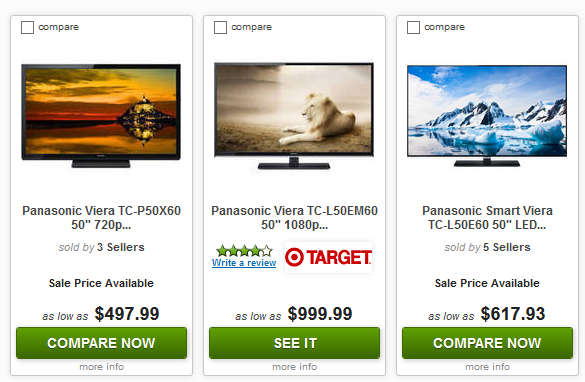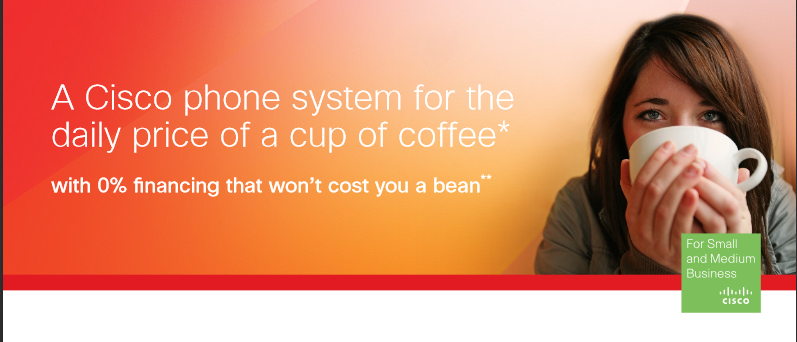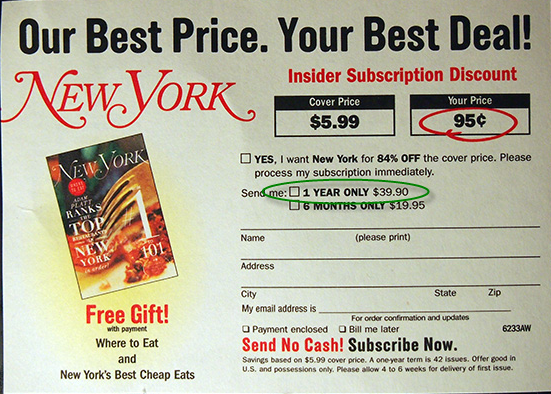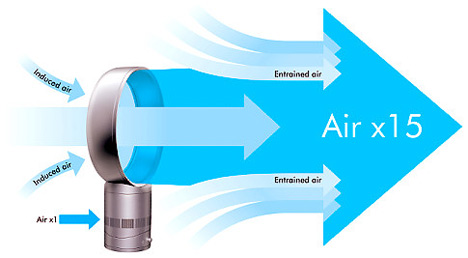5 Ways to Increase the Perceived Value of Your Product
One of the problems that every Internet marketer faces is finding a way to get people to pay for whatever it is that you sell. What I mean by that is that your customers may have need for your product or service but they wonder why they should spend so much money for whatever it is that you have for sale. After all, isn’t someone else offering a cheaper, similar service?
Of course, we all know that you don’t want to actually sell products based on price alone. Any time you compete exclusively on price, you end up in a race to the bottom until you are giving away your product and hoping that this will somehow work out in the end when you crush the competition.
Just look at newspapers across the country, which are hemorrhaging because people have begun to think that news should be offered for free, never mind that reporters need to be paid and you can see that competing on price doesn’t work. The more prestigious newspapers such as The Wall Street Journal and the New York Times realized this and started charging for subscriptions, which are sold based on the cache their names hold.
The problem of course is that no everyone runs a New York Times or a Wall Street Journal. Most of us have small businesses that need to be able to sell products without having already built up a massive name for ourselves. So how exactly do you increase the perceived value of the product that you have for sale with your potential customers if you don’t have a name? Here are five great ways to do just that:
Make a Comparison
I know I just got through telling you that competing on price alone is a terrible idea and it is indeed a terrible idea. You don’t want to end up in the proverbial race to the bottom. At the same time, you do want to increase the perceived value of your product by giving it a feeling of being a really good deal as compared to other options.
One way to do this is to offer several different products side by side which are similar but one of which has a super high, premium price. This makes your mainstream product, the one you really want to sell, seem like a pretty good deal by comparison. You see it all the time when you log onto almost any membership site.
Look for sites where they have tiered levels of products and you can easily see that they’ve positioned the mainstream product, the one that is “most popular” somewhere in the middle of the product line. By making such a comparison between the products, you can easily make the mainstream one seem affordable and a good value. Consider the following:

This is a screen grab from PriceGrabber. All three TV sets are 50”. Two of them are 1080P TVs and one is a 720P TV (the one for under $500). Now let’s assume for a moment that the people at Panasonic had crafted this and that all three TVs (all of them are in fact from Panasonic) were being sold on their store’s website. Which one is likely to sell the most? If you guessed the one for $617 you’d be correct.
It offers customers a significant amount of perceived value. They are getting a good quality TV set and paying a lot less than the high price of the $1,000 offering while also not feeling like they’re skimping on quality by taking the lesser 720P television set. This is what I mean by creating a comparison. By positioning the three products together, you create perceived value that the one you likely want to sell more of is the one that’s the best deal.
Now you could of course do this by comparing yourself to the competition instead of comparing different versions of your product to each other. The problem is that this opens you up to that race to the bottom. Your competitors may see this and may decide to lower their prices to make their product competitive with yours. By comparing your product to your product, you get the same effect without as much likelihood of losing customers to the competition.
Compare Expensive Products to Everyday Items
This is another technique that has been used to great success by a large number of different companies throughout the business world. The idea is to take a very expensive item and then break it down so it seems like it’s something that pretty much anyone ought to be able to afford. It makes it sound almost like a no brainer to be doing it.
The classic example of this is below. “For about the price of a cup of coffee per day you get peace of mind” or some variation on that. Cisco is selling a networking product by reminding people that the cost works out to just £2.50 per day (about $4). In other words, “about the price of a cup of coffee.” This makes their product, which in reality costs over $3,000 seem eminently affordable.

Never mind of course that people rarely buy a $4 latte at Starbucks 365 days a year and never mind that one of the things that pretty much every expert on personal finance reminds people of is that they can drop the morning latte and save a bundle. This is simple psychology. It works because it makes people look at a product in completely different terms than they otherwise would have looked at it in.
Another popular way to make this comparison is to refer to “just pennies a day.” This is actually commonly used by a popular charity known as Feed the Children (and yes, they are a very worthy cause and it is worth contributing to them if you have the money to do it). However, the same technique can just as easily be adapted to pretty much any product that you want to sell.
Make it seem cheap by comparing it to the cost of things that people don’t think twice about and it makes a psychological impact allowing you to sell the product even if it happens to cost a significant amount of money.
Break it Down Into Small Chunks
I wrote about this in a previous blog post but it’s worth mentioning again here because this really does increase the perceived value without actually costing you anything to make it happen. Amazon has an awful lot of magazines available on their website which they sell for $1 per month or thereabouts. Now for pretty much anyone in the Western World, a dollar a month is nothing. It’s a throwaway thing that you don’t think about.
This is exactly what Amazon wants to make you believe. It’s a dollar or two a month. What’s the big deal? I had mentioned how I had signed up for close to a dozen different magazines with them because they all seemed so cheap and how I ultimately realized that I was spending a couple of hundred dollars a year when I was done. I’m down to just three magazines now both because I realized it was expensive and because I just don’t have that many free hours in a day to read so many magazines.
However, this does bring up an important way to improve the perceived value of your product. By making it seem as if it’s something that’s so cheap it’s a throwaway item, you don’t really think about it and you end up subscribing a lot more easily. Compare this with a subscription card for a typical magazine:
It’s $40 for a year of New York Magazine. Mind you, New York is a fine magazine and I have nothing against it. However, $40 does make you think twice before you decide that you should pay for a subscription. But if it’s just $3.35 you probably wouldn’t think twice about subscribing. That’s how Amazon prices most of their magazines and it keeps people buying them longer.
You can do the same thing by simply selling your customers a subscription to your product on a month to month basis as opposed to selling them an annual or one time item.
By the way, speaking of that, Microsoft and Adobe have both recently introduced subscriptions to their flagship products. You can now buy a subscription to MS Office for $60 per year or to Adobe Creative Suite for $50 per month. Office of course used to cost around $500 and Creative Suite cost over $3,000. Why the new pricing? Simple – both companies realized that by selling a subscription, they’re likely to make more money in the long run than they were when they sold standalone products.
You know, an evangelist for Microsoft (yes, there really are such people – they’re paid to sing the praises of MS products to business types) once told me that Microsoft Office’s biggest competitor is Microsoft Office. He said many people didn’t see the need to shell out another $500 per use to upgrade when the old version was perfectly useable. The subscription model means that they’ll keep shelling out for as long as they’re using a Microsoft product.
Try the Dyson Approach
The odds are good that you’ve seen a Dyson commercial on TV at some point in your life. These commercials talk about the science behind a Dyson vacuum cleaner. They show you how the science creates a kind of a whirlpool which sucks up dirt a whole lot better than pretty much any other vacuum cleaner on the planet.
Frankly, I’ve got no idea whatsoever whether Dyson’s claims are true. I’ve never owned a Dyson vacuum cleaner so I can’t reasonably state whether or not their vacuum cleaners really do suck up dirt at a much higher rate than others. I’ll assume for the sake of this article however that what they say is true.
Ever wondered why they go to the trouble to demonstrate the science behind their vacuum cleaners in pretty much every commercial that they produce? Why not simply show side by side comparisons of two different pieces of carpeting, one from a competitor’s vacuum and one from their own? The answer is simple: They’re trying to increase perceived value.
Again, Dyson vacuum cleaners may well be worth the price and I have no comment one way or the other on them. However, by showing you all the science and engineering that goes into building a Dyson vacuum cleaner, the company is trying to dazzle you by allowing you to see that the product really has a lot standing behind it. The people who crafted it for you really have thought about the best way to pick up dirt.

You can do the same thing with almost any product that you have for sale, even something as simple as a cigarette. Remember the very first episode of Mad Men and the proposal for selling Lucky Strike cigarettes by saying “It’s toasted?” So what that it’s toasted? So are all the other cigarettes. However, by giving that piece of information out in an ad, they took the focus off the price and put the focus on something that gives the product a bit of mystique.
Show How Much They’ll Save
Finally, another approach to creating value is to show calculations to your customers with large numbers. While the FCC has largely put the kibosh on such ads, a great many Internet marketing products used to be sold with ads offering specific dollar amounts that the creator of the product had supposedly made and then in tiny letters at the bottom, a disclaimer that individual results may vary.
You can do the same in reverse by showing people how much time, money or both they’ll save by using your product. For example, if you were running a service offering online backup of vital documents, you might ring up the cost of an external hard drive, the hours spent restoring, the need to deal with an offsite copy of the thing etc.
This in essence would allow your customers to perceive value by seeing that they would be so much better off by simply using your simple and inexpensive online storage option. The idea being that they could save a great deal of time any money over the course of a year or two if they use your product.


